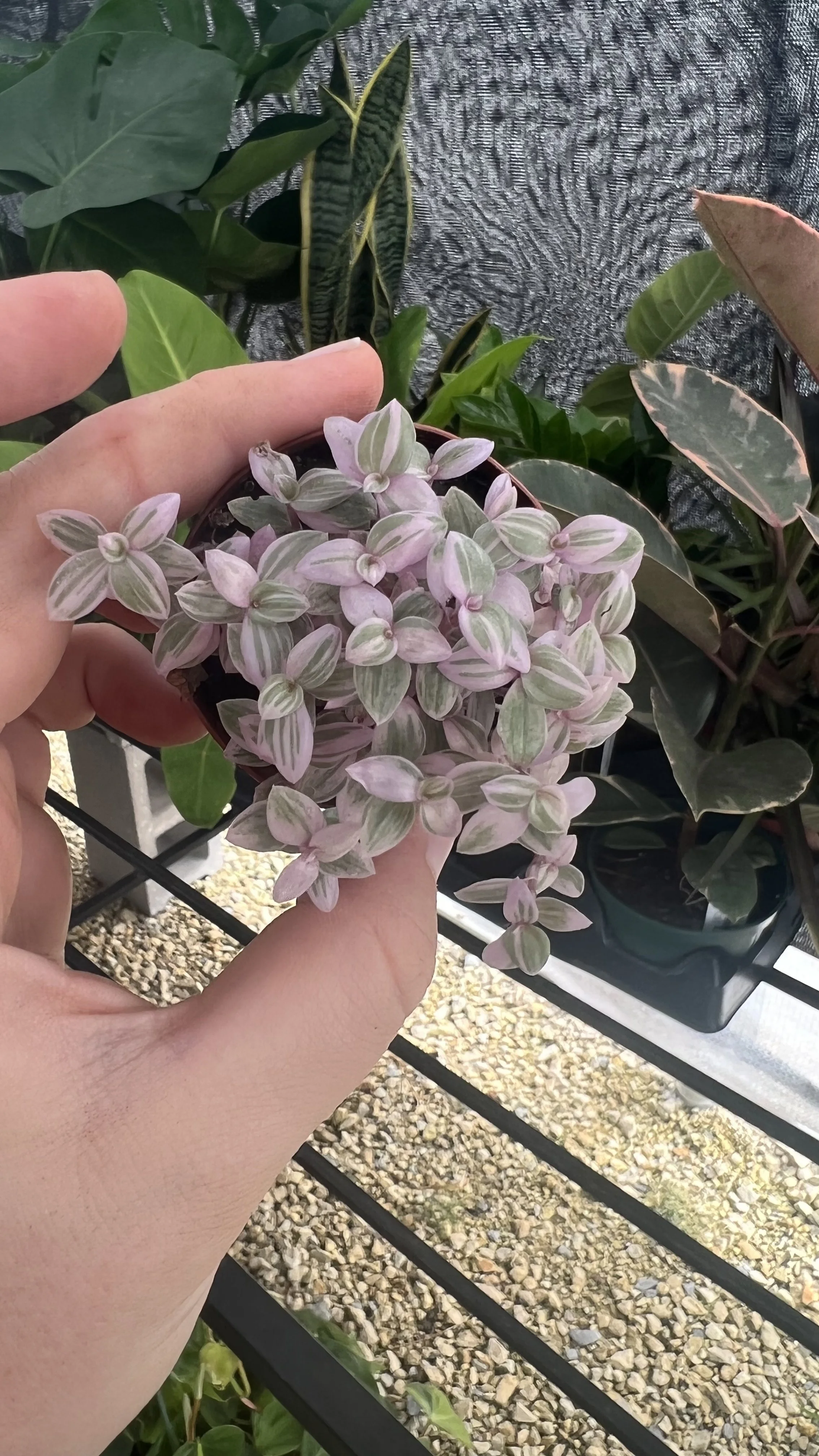
PINK PANTHER PLANT
Callisia
Family Commelinaceae
-
Light: Medium to low light is best for Tradescantia. Use the leaf coloring to determine the best lighting. Coloring becomes washed out in high light levels.
Temperature: 60-85 F
Humidity: medium; avoid drafty areas
-
Water: Water when the top 2” of potting mix has dried. Don’t allow potting mix to completely dry between watering as tradescantia leaves crisp up quickly.
Repotting: Repot every 1-2 years into a slightly larger container (1-2” increased diameter or depth). Use a general purpose potting mix. If you notice that the center of the plant is dying out, you can easily snip some cuttings to propagate in a new container.
Fertilizing: Either…
Water Application: Incorporate fertilizer into your watering cycle once per month March through September. Dilute an all purpose fertilizer (20-20-20) by half OR use your favorite fertilizer rated for houseplant use in your water.
Slow Release: Incorporate slow release fertilizer pellets into the top inch of potting soil every 6 months. Apply the rate indicated for indoor plants on the label. If no recommendation for houseplants is present, apply 1/4 to 1/2 the listed rate.
-
Spiderworts include striking houseplants, annuals and native wildflowers.
There are several succulent tradescantias that are often referred to as “kitten ears.” I would refer you to my succulent care information in those cases.
-
(Listed in order of commonality…)
Root decay caused by overwatering
Fungus gnats
Leaf loss from dry conditions
Central dieback that comes with plant age
Two-spotted spider mites
Thrips
-
Is pink panther plant pet safe?
Like Tradescantia, the toxicity level of Callisia is a gray area for animals. It has a sap that can cause a mild allergic reaction in some pets if ingested. It’s up to you whether or not you trust your pets around this plant group.
Can I propagate?
Yes! Like Tradescantia, Callisia is an easier houseplant to propagate by cutting. Simply, snip a cutting that includes 4-8 leaves and stick the cutting into moist potting mix, ensuring that at least one stem node is in contact with moisture.
Have a more specific question?
I’m just a few clicks away.



